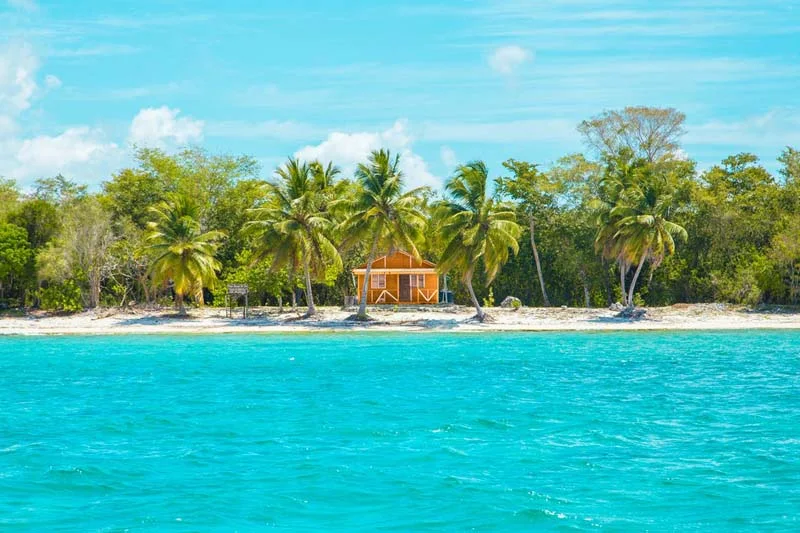![[feature] 9 Countries Americans Can Travel Without COVID-19 Test](https://blogger.googleusercontent.com/img/b/R29vZ2xl/AVvXsEiawAL-0mezmuKJliBW6a-revayjVLMRgSeBFvAqoIRN8TCUkiCMAp4AgG8mygZxw-ewD45s2upXc0U_FECCMjKI0N2BWfCtXdE8oGd4QvbaHBMMvK0A-bP3vpCmsuS6BxlY-3Df_iUEoA/s16000-rw/health.dearjulius.com.jpg) |
| © Anna Shvets / Pexels |
By Laurie Baratti, TravelPulse
As much of the Northern Hemisphere battles a new cold-weather wave of COVID-19 infections, perhaps international travel remains low on most people’s list of priorities.
For others, who’ve spent the better part of a year sequestered in the immediate vicinity of their homes, COVID fatigue has convinced them that there’s no time like the present to escape to foreign destinations.
Most countries that have reopened their borders to international visitors are requiring specific testing protocols and/or quarantine upon arrival of travelers wishing to enter. Still, there are a handful that right now are demanding neither from foreign tourists.
Albania is open to outside visitors, although some airlines have canceled or reduced flights into December. No COVID-19 testing or quarantine is required, but travelers can expect to undergo a health screening process upon arrival.
U.S. citizens are allowed to enter Eastern European nation of Belarus without providing results of a COVID-19 test or quarantining, but will need to undergo health screenings, including temperature checks, at airports and other points of entry.
Brazil, which was an early epicenter of the global COVID-19 outbreak, reopened international air travel to foreign tourists on July 29. To get in, U.S. travelers don’t even need to supply any test results or complete any quarantine in Brazil, unless their airline or another travel entity dictates that they do so. Please note that the U.S. State Department still maintains its "Level 4 Travel Advisory (Do Not Travel) due to COVID-19" for Brazil.
The Caribbean nation of the Dominican Republic, home to such popular tropical tourism spots as Punta Cana, Puerto Plata and Santo Domingo, doesn’t require international travelers to quarantine or take a COVID-19 test prior to arrival, but passengers may be randomly selected for testing at their port of entry as part of surveillance efforts. Between three and ten percent of passengers (and those who display symptoms) will have a quick, aleatory breath test administered upon arrival. Standard health screenings, including temperature checks, will also be performed on all arriving passengers.
Travelers will also need to complete and sign a Traveler’s Health Affidavit as part of the immigration and customs forms provided by the airline or by Dominican authorities, attesting that they’ve not had any COVID-19 symptoms in the past 72 hours and providing their contact details for the next 30 days.
While U.S. land borders with Mexico remain closed to non-essential travel, there’s no restriction on American arrivals by air, and no testing requirements or mandated quarantine either. Travelers can expect to receive health screenings and temperature checks upon arrival at the airport, but those who pass are free to enjoy Mexico’s many delights (while observing public health and safety measures, of course).
U.S. citizens are permitted to enter North Macedonia without COVID-19 testing requirements or quarantine restrictions. Arriving passengers are subject to temperature checks via thermal cameras in the airport at passport control.
Americans are allowed into Serbia without testing or quarantine requirements at this time, but all arrivals must take a self-assessment test, which they should repeat on the tenth day of their visit.
This is generally true, with some notable exceptions. Any U.S. citizens entering Serbia from North Macedonia, Croatia, Bulgaria or Romania will need to provide a negative COVID-19 PCR test result from a test taken within the previous 48 hours.
A tourism favorite because of its incredible African safaris, Tanzania is accepting U.S. citizens and other international travelers without testing or quarantine requirements. The only exceptions would be those whose airline or country of origin specifically requires a certificate of negative COVID-19 testing as a condition for traveling.
Health screening measures are in place at airports and other ports of entry, and passengers demonstrating symptoms must undergo enhanced screening and possible testing upon arrival. All arrivals will need to complete a Health Surveillance Form while en route for submission to Port Health authorities.
U.S. citizens face no travel restrictions when going to Turkey, but international passengers are be required to complete an information form and will be checked for signs of infection upon arrival. Anyone who has COVID-19 symptoms will need to take a mandatory PCR test, and those with confirmed or suspected cases will be taken to a hospital for further examination, or to a dormitory to self-isolate.
See more at TravelPulse
As much of the Northern Hemisphere battles a new cold-weather wave of COVID-19 infections, perhaps international travel remains low on most people’s list of priorities.
For others, who’ve spent the better part of a year sequestered in the immediate vicinity of their homes, COVID fatigue has convinced them that there’s no time like the present to escape to foreign destinations.
Most countries that have reopened their borders to international visitors are requiring specific testing protocols and/or quarantine upon arrival of travelers wishing to enter. Still, there are a handful that right now are demanding neither from foreign tourists.
Albania
 |
| © Yves Alarie / Unspalsh |
Albania is open to outside visitors, although some airlines have canceled or reduced flights into December. No COVID-19 testing or quarantine is required, but travelers can expect to undergo a health screening process upon arrival.
Belarus
 |
| © Vlad_Sin / Pixabay |
U.S. citizens are allowed to enter Eastern European nation of Belarus without providing results of a COVID-19 test or quarantining, but will need to undergo health screenings, including temperature checks, at airports and other points of entry.
Brazil
 |
| © Davi Costa / Unsplash |
Brazil, which was an early epicenter of the global COVID-19 outbreak, reopened international air travel to foreign tourists on July 29. To get in, U.S. travelers don’t even need to supply any test results or complete any quarantine in Brazil, unless their airline or another travel entity dictates that they do so. Please note that the U.S. State Department still maintains its "Level 4 Travel Advisory (Do Not Travel) due to COVID-19" for Brazil.
Dominican Republic
 |
| © Leonardo Rossatti / Pexels |
The Caribbean nation of the Dominican Republic, home to such popular tropical tourism spots as Punta Cana, Puerto Plata and Santo Domingo, doesn’t require international travelers to quarantine or take a COVID-19 test prior to arrival, but passengers may be randomly selected for testing at their port of entry as part of surveillance efforts. Between three and ten percent of passengers (and those who display symptoms) will have a quick, aleatory breath test administered upon arrival. Standard health screenings, including temperature checks, will also be performed on all arriving passengers.
Travelers will also need to complete and sign a Traveler’s Health Affidavit as part of the immigration and customs forms provided by the airline or by Dominican authorities, attesting that they’ve not had any COVID-19 symptoms in the past 72 hours and providing their contact details for the next 30 days.
Mexico
 |
| © Rafael Guajardo / Pexels |
While U.S. land borders with Mexico remain closed to non-essential travel, there’s no restriction on American arrivals by air, and no testing requirements or mandated quarantine either. Travelers can expect to receive health screenings and temperature checks upon arrival at the airport, but those who pass are free to enjoy Mexico’s many delights (while observing public health and safety measures, of course).
North Macedonia
 |
| © Murat Çorlu / Unspalsh |
U.S. citizens are permitted to enter North Macedonia without COVID-19 testing requirements or quarantine restrictions. Arriving passengers are subject to temperature checks via thermal cameras in the airport at passport control.
Serbia
 |
| © MilosB / Pixabay |
Americans are allowed into Serbia without testing or quarantine requirements at this time, but all arrivals must take a self-assessment test, which they should repeat on the tenth day of their visit.
This is generally true, with some notable exceptions. Any U.S. citizens entering Serbia from North Macedonia, Croatia, Bulgaria or Romania will need to provide a negative COVID-19 PCR test result from a test taken within the previous 48 hours.
Tanzania
 |
| © Roger Brown / Pexels |
A tourism favorite because of its incredible African safaris, Tanzania is accepting U.S. citizens and other international travelers without testing or quarantine requirements. The only exceptions would be those whose airline or country of origin specifically requires a certificate of negative COVID-19 testing as a condition for traveling.
Health screening measures are in place at airports and other ports of entry, and passengers demonstrating symptoms must undergo enhanced screening and possible testing upon arrival. All arrivals will need to complete a Health Surveillance Form while en route for submission to Port Health authorities.
Turkey
 |
| © Mar Cerdeira / Unspalsh |
U.S. citizens face no travel restrictions when going to Turkey, but international passengers are be required to complete an information form and will be checked for signs of infection upon arrival. Anyone who has COVID-19 symptoms will need to take a mandatory PCR test, and those with confirmed or suspected cases will be taken to a hospital for further examination, or to a dormitory to self-isolate.
See more at TravelPulse

























